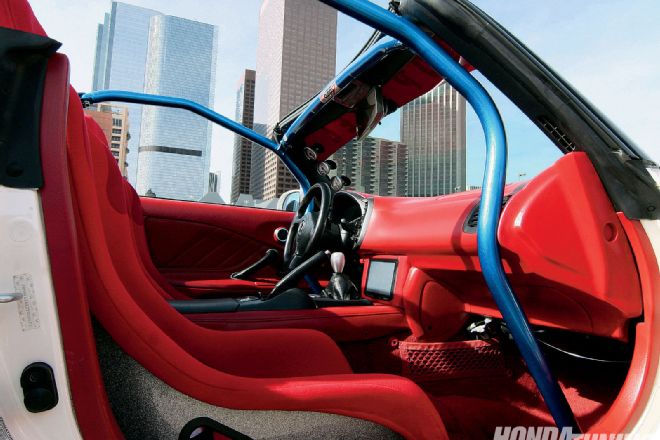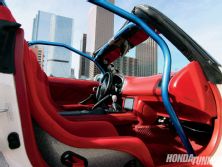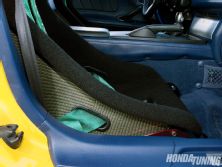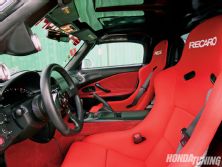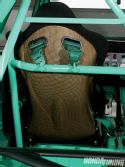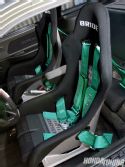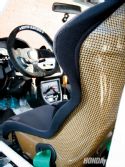The FIA is one of the largest motorsport governing boards in the world. Founded in 1904, the FIA is over 100 years old. The three letters stand for Federation Internationale de l'Automobile, which, loosely translated, means The International Automotive Federation. To date, the FIA oversees more than 30 championships, from junior karts to drag racing, the WRC, hill-climbs for historic cars, and its most famous, Formula One.
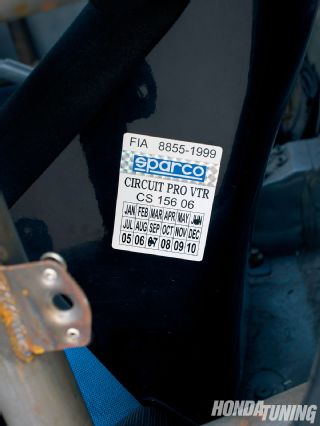 |
Custom Racing Seats - FIA Certification
|
Custom Racing Seats - FIA Certification
Also known as a safety foundation, FIA sets standards and creates certifications that demand thorough and intense testing for qualification. So what exactly does all of this mean for you when purchasing an FIA-certified product such as a seat or helmet? The short version is that the product is known to provide the highest level of safety available at the time of certification.
In Filipe Massa's case, the advanced FIA 8860 helmet standard used in Formula One since 2004 undoubtedly saved his life. This helmet was over eight years in testing and development, and the end result was a completely new way of producing a helmet that's better engineered to protect the human head. Recently, the WRC has tested and approved a new open-faced version, further extending its overall safety.
So what does certification involve? In the case of the 8860 helmet standard, it must withstand an impact with deceleration of up to or less than 300g. A fire test subjects the helmet to 1,472 degree for 30 seconds. Temperatures inside the helmet must not exceed 158 degrees. The visors even have projectiles fired at them at high speeds. The outer shell of the helmet is usually constructed of layers of T1000 aerospace-grade carbon fiber material, assembled by weaving thousands of miles of micro-threads together to form the helmet design. In the end, a helmet can weigh as little as 43 ounces but withstand a 55-ton tank driving over it as Schuberth often demonstrates.
If you value your head, buying a certified helmet is obviously on your list. But a helmet of this level is probably more than most can afford outside professional motorsport. But a Snell-certified helmet works the same way; the standard is just different. Thinking about something like a seat, it could be a bit harder to understand the need for a certification, however.
The seat though, is on the same page with the helmet as a second level of protection (the car is first). It contains your entire body, a great deal more mass. In a crash, a seat could become detached, positioning your body in a way that even the seatbelts couldn't protect. Side impact protection is also a huge factor. These two areas of interest are big contributors to the fact that no reclineable seats are FIA certified.
An FIA certification for a racing seat can be found on their website (www.fia.com). It's highly technical and very long, but involves shear strength for mounting, torsional tension for twisting, minimum and maximum sizes for seatbacks and bottoms, and a huge number of other things. But that's just the start of it. The seat must endure simulated crashes with a test dummy and then be measured again to a post-crash standard.
As an example, let's take a look at a well known seat that isn't FIA certified, but is often sold as the equivalent-the Spoon Carbon Kevlar seat. It's a non-reclining, pure motorsport seat. Since it's a fixed bucket seat, you know it could potentially be FIA certified. Often it's sold as approved for motorsport use by JAF (Japan Automobile Federation), which follows the same regulations as FIA. But looking at the JAF website, it looks more like the American version of AAA rather than anything resembling FIA. This isn't taking anything away from the seat at all. But what we're seeing here is perhaps a crucial distinction.
Everyone is aware of the wave of copied overseas parts. They take the real thing, copy it to a "T" and then sell it as the original. Or, if they want to avoid the attorneys all over them like a pack of dogs, they state their product is "original-like" or "style." So if a Spoon seat looks, smells, and is even built in the same way as an FIA-certified seat, is it just as safe? If the convincing argument is supposed to be that it's approved by JAF, then, in this journalist's opinion, no. It doesn't say tested by JAF, and quite honestly, JAF appears on the surface to be nothing like FIA.
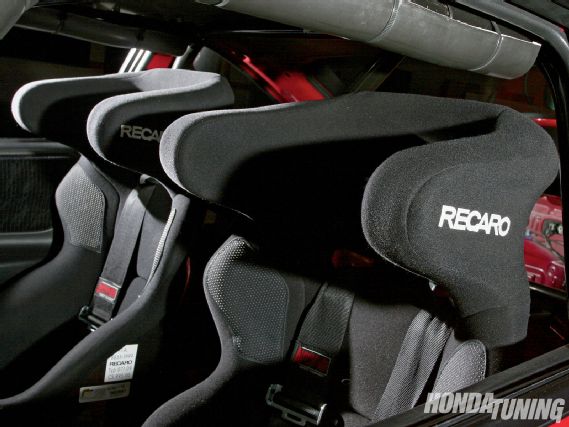 |
FIA-approved Recaros help hold Reza Yaghoubi safely in place as he rips up weekend track days.
|
FIA-approved Recaros help hold Reza Yaghoubi safely in place as he rips up weekend track days.
A JDM seat from Bride, Spoon, or even Mugen may be built exactly as advertised with the best materials, but to date, there is no better motorsport testing than FIA. Like Snell in helmets, there may be a different agency than FIA and for the general public and weekend motorsport it may be entirely adequate. However, trying to put it on par with a seat that is FIA certified, like a Sparco race seat, just isn't the same.
One final example. Let's say a team uses a non-FIA certified seat in a professional racecar like the Super GT series. Does this mean the seat is professional motorsport ready? Sure sounds like it, right? These teams take everything seriously, with no margin for error. But without knowing exactly how that seat will perform in a crash, unlike an FIA seat with its extensive crash testing, it leaves them open to risk. The team's use of a particular seat in Super GT is a resounding certification, likely good for anything 99.9% of our readers would need. But I'm not so sure you would see it used in say, an F1 car.
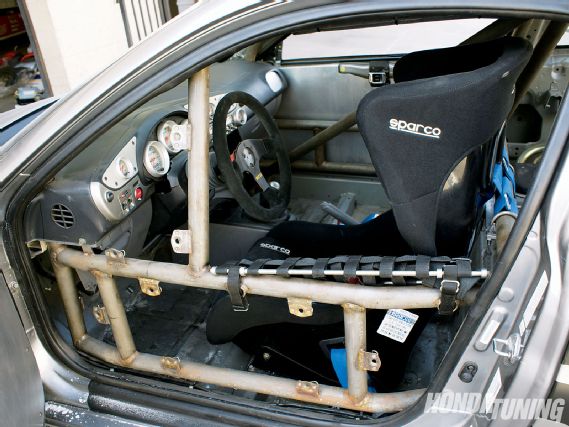 |
HaSport utilizes an FIA-certified Sparco bucket in their land-speed screamer.
|
HaSport utilizes an FIA-certified Sparco bucket in their land-speed screamer.
All of this makes any FIA-certified part double in expense. First is the expense in making the product capable of passing the test, and second is the cost of the test and certification itself. Is it worth it to you? Well, it's insurance. The hope is that you never actually have to test its limits. If you're doing some parking lot cone racing, then you probably won't have to worry much about it. Weekend track days with a "drive it there, race it there" type of car, well, I'd certainly want the additional protection. Time attack cars, without question, should have the maximum protection available for the driver.
With a better understanding of what an FIA or similar certification buys you, perhaps your decision will be a bit more informed. Undoubtedly it is somewhat conditional, depending on what you do, but now maybe you know a little more about why those three letters always seem to come up.
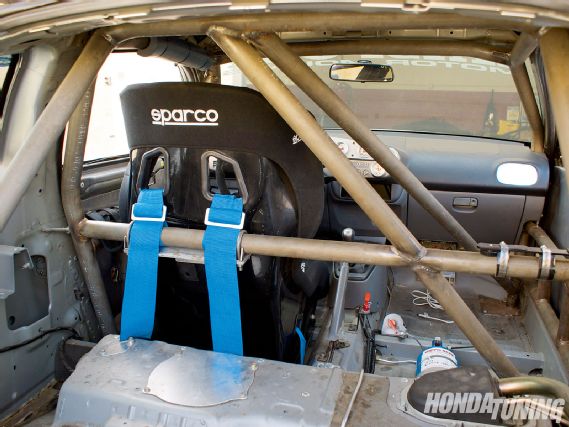 |
Custom Racing Seats - FIA Certification
|
Custom Racing Seats - FIA Certification

